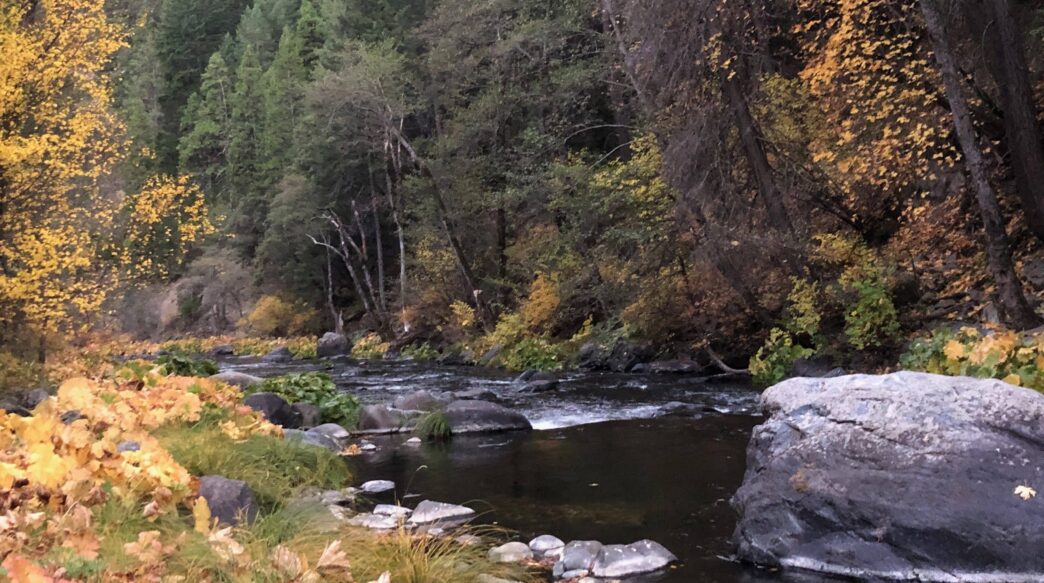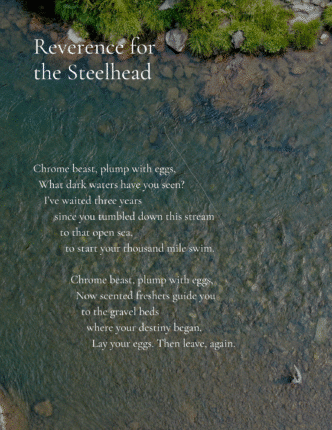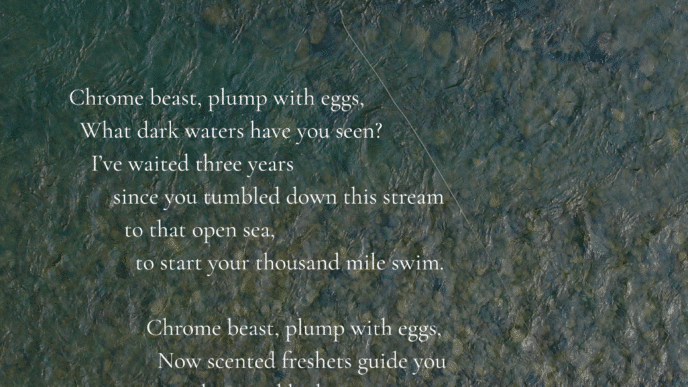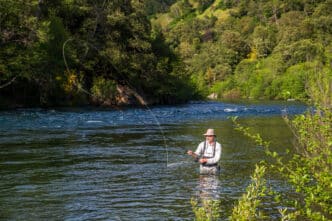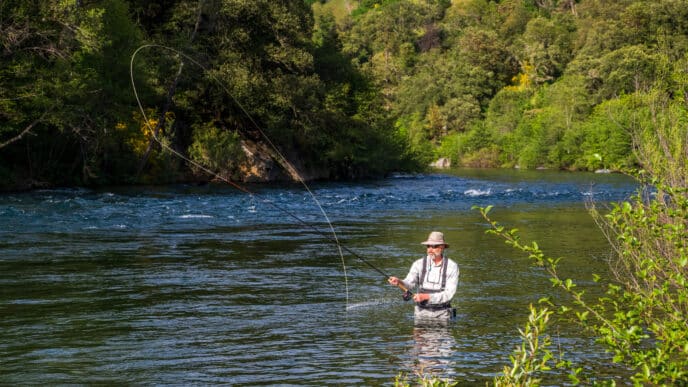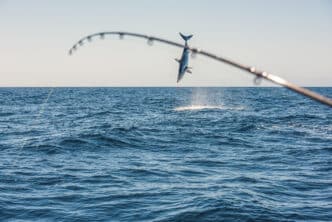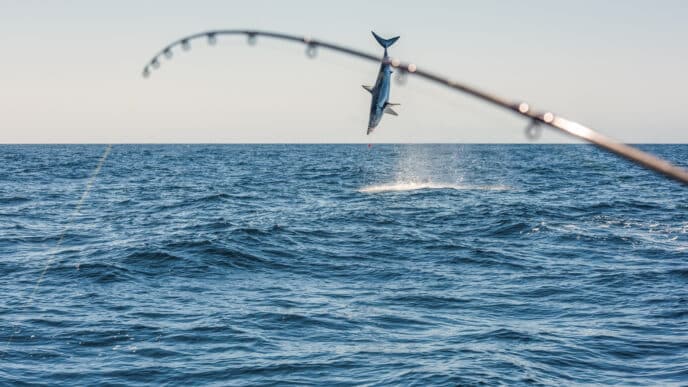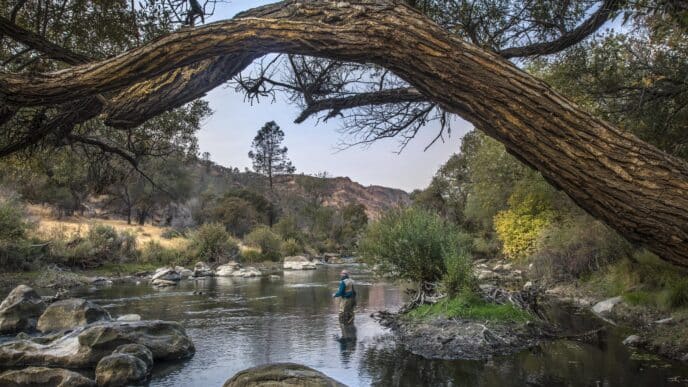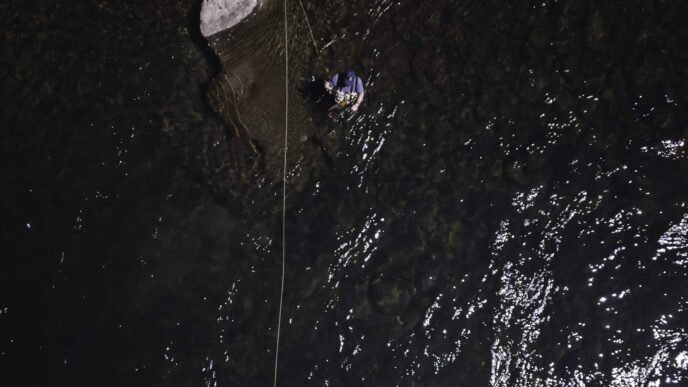Euro nymphing can be a polarizing term for many fly anglers.
Some argue that it is not fly fishing because you aren’t casting fly line with your fly rod. Others will say I am using flies and using a fly rod, so how is it not fly fishing? For me (and many others), I simply refer to it as tight line nymphing; it’s just another way to get your flies to the fish. There are many ways to present your flies, and in my opinion, there is no wrong way as long as you are enjoying the experience and hopefully bringing a fish or two to the net. My evolution to tight line nymphing, however, came for a very specific reason.
I first met Craig Ballenger in 2001 at the Shasta Springs Trout Camp, where he hosted a group of us for the weekend. At that time, I had been fly fishing for about 15 years, primarily using dry flies and occasionally nymphs with an indicator (or bobber, as Craig relentlessly called it). I was decent with dry flies and fairly mediocre with nymphs, but I had an insatiable curiosity about improving both skills. There were plenty of books that surely helped, but there were no online instructional videos back then. You learned by trial and error or by meeting someone like Craig, who was willing to share his extensive knowledge gained from years of fly fishing.
He offered to take me out on the Upper Sacramento River and show me some things. This is when I was introduced to high stick nymphing. I won’t bore you with the details of high stick nymphing (a version of nymphing with split shot and no bobber), and I’m sure most of you know how it’s done, but learning the technique from Craig was a tremendous boost to my fly-fishing learning curve. He had been fishing this way with nymphs ever since he started fly fishing. It is a technique that most claim originated on the Upper Sac, and there I was learning it from a master. Craig and I became fast friends from that first encounter, and we fished together many times over the years. He would often call me, mostly to complain about Bay Area sports teams, sometimes to provide water flow and hatch updates, but always asking me to come fishing. He seemed to forget I lived about four hours away, but I truly appreciated the offers.
My son Reid was born in 2001. He is the youngest of my three children and had a typical early childhood growing up in the suburbs with two older sisters. That all quickly changed in 2010 when Reid suddenly began having problems with his vision. He told us that everything looked blurry. We thought he was having issues with his prescription glasses, so we took him to the ophthalmologist. It was there that we learned we needed to see a specialist. The specialist informed us that Reid had a rare genetic condition called Stargardt Disease, which is essentially a juvenile form of macular degeneration. He had lost his central vision and would have blurred peripheral vision. His corrected vision decreased from 20/20 to 20/400, with no treatments or cures available. My children grew up camping and fishing from a very early age, walking small streams with me in a backpack until they were old enough to navigate the creeks safely on their own. They were all introduced to fly fishing early, but they didn’t become comfortable with a fly rod until their early teenage years. Reid was always enthusiastic about catching trout. His visual impairment prevented him from tying a fly on the line, seeing a bobber, or spotting a fly on the water. When he was younger, I would hook a trout and let him bring it in. When he became skilled enough to accurately cast a dry fly, I would yell “Now” when I saw the strike, and he would then set. He really enjoyed it, but he always wanted to be more independent on the water and catch fish on his own.
When Reid was 12, I had the opportunity to take him fishing on the Upper Sac with Craig. He was eager to guide Reid, but Craig was never sure what to do with children when he took them out on the river. He always worried that something would go wrong on his watch. We went down to the river, and I kept a good distance away from the two of them so I could watch without being the overbearing father. Well, about four steps in, Reid fell into the river a little behind Craig and just stayed there for a moment in the water. I got a little closer and could see Craig’s concern. He reached Reid and asked him if he was okay, to which Reid replied, “Yeah, I’m fine. I was just looking at this cool plant growing on the rocks.” I could hear Craig chuckle with a sigh of relief. He later told me in his own words, “Dear God, I thought I had killed him.”
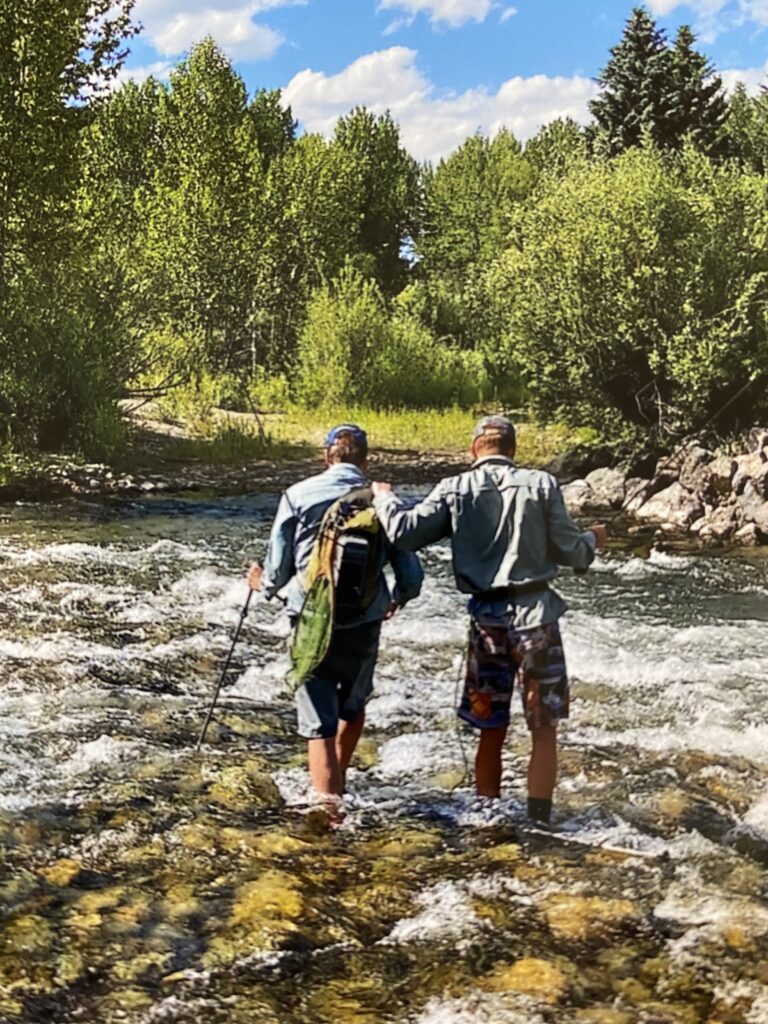
Once the two were settled, Craig began teaching him the methods of high-sticking. I had instructed Reid on the basics of this technique since I found it to be a good way for him to fly fish within his visual limitations. At that point, he had only been trying it for a couple of years and was experiencing some success. I did my best to help him, but I was his dad, not his teacher, and for those of you with children, I think you understand the difference. The rig with two flies and split shot can be challenging to cast accurately, especially for a younger angler. Craig worked with him all afternoon, refining his cast, teaching him to adjust his depth with simple arm movements, and as Craig liked to put it, “immediately fishing the flies.” Reid learned a lot that day, and the two of them hit it off. We all fished together several times over the next few years, and it was a highlight for both me and Reid. Craig was astounded and intrigued by Reid’s ability to navigate life with his visual impairment.
In 2016, I came across an article describing Euro nymphing as a relatively new technique for fly fishing in the US. It was a bit confusing for me to fully understand the concepts and rigging, as I had relied on split shot for most of my nymphing practices. At that time, I couldn’t find any videos that would shorten the learning curve. In the summer of 2017, I decided to commit to trying this “new” technique. Like anything new, it was initially quite a struggle. I wasn’t using the right amount of weight on the flies, and my drifts were inconsistent. Over a short period, things started to make more sense, and catching fish became somewhat predictable. The main difference I noticed from high sticking was that I was in contact with my flies rather than the split shot. It was that “feeling” that gave me my aha moment. This approach would be perfect for Reid to use when fly fishing. Because of his experience with high sticking, he adapted to tight lining quite quickly. It was much easier for him to cast, and there was less line to get tangled at his feet. The line between the flies and his fingertips was much thinner and more sensitive for feeling strikes. I will never forget the day in the summer of 2019 when it all clicked for him. We were fishing on the South Fork of Battle Creek, and he really wanted to fish on his own without anyone helping him. I sat with a friend on the bank, and we watched Reid clamber onto a rock in the middle of the river. He identified the drift, as he could differentiate between the white water and the darker water, and he knew where he wanted his flies to go. He proceeded to catch six fish in seven casts in that spot. It was an emotional moment for me as I realized that since Reid’s Stargardt diagnosis, I had spent nine years trying to give him independence and access to a very challenging sport that he really loved.
Reid went off to Colorado State in 2020, but he came home that first summer. Craig asked if we could make it up to Dunsmuir for a little fishing. We hadn’t all fished together since Reid embraced tight lining. I was excited to tell him about his young disciple’s maturation. Craig was familiar with tight lining but wasn’t a convert or believer by any means; however, as a gatherer of knowledge, he was curious to learn more about this method and see Reid in action. After a detailed explanation, both philosophical and visual, Craig’s response was, “Hmmm, let’s go fishing.” We headed down to a hole on the Upper Sac, a few hundred yards above Mossbrae Falls. Craig said he would let Reid go first, and they would fish this eight to 10-yard hole to see whether tight lining or high sticking would be more successful. Reid did quite well, much to Craig’s surprise, as he landed five fish. Craig wasn’t going to be outfished, though, and he landed five as well. He and Reid backed out of the hole and onto the bank where I was sitting and watching. Craig lit up a cigarette, contemplated the results of the two methods, and asked, “So, what did we learn?” I replied, “Not much … the fishing is good today.”
There are many ways to present your flies to the fish, whether focusing on surface presentations or subsurface presentations. You can choose to make the perfect dry fly cast with a dead drift, strip streamers, indicator fish, high stick, or tight line. Regardless, each method poses different challenges for the angler and requires a variety of skills. I was fortunate to be exposed to a wide range of tips and tactics, especially from someone like Craig Ballenger. I had a unique reason to pursue a deliberate technique as a possible solution for Reid. He and I are both glad we found one that helps him enjoy the experience. After all, it’s just fly fishing.




